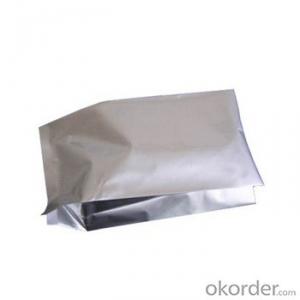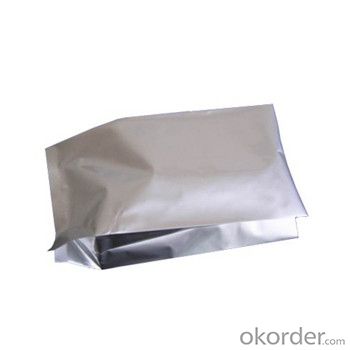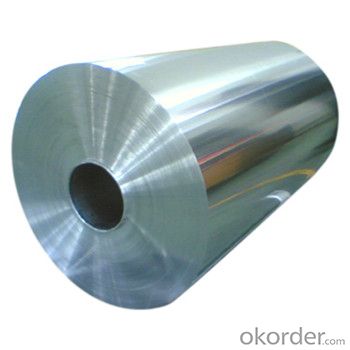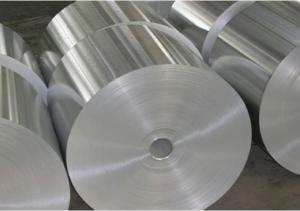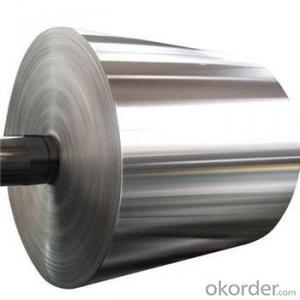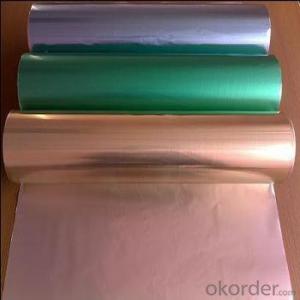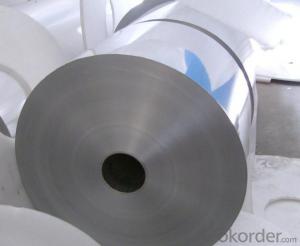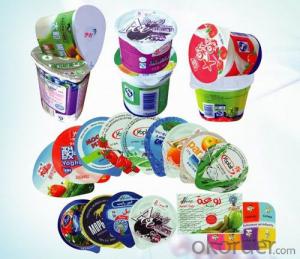Aluminum Roofing Sheets Ontario - Flat Plain Aluminium Foil for Flexible Packaging
- Loading Port:
- China main port
- Payment Terms:
- TT OR LC
- Min Order Qty:
- 3 m.t.
- Supply Capability:
- 10000 m.t./month
OKorder Service Pledge
OKorder Financial Service
You Might Also Like
Specification
1.Description of Flat Plain Aluminium Foil for Flexible Packaging
1) Alloy:1050 , 1060 ,1070,1100,1145,1070,1350
2)temper:O H12 H14 H16 H18 H22
3)Thickness:0.003---10mm
4)Width:1000-1300mm
5)Widely used for drink cans, cosmetic lids, wine lids, PS board bases and other deep processing partsair-condition foil,food package foil , cigarette foil
2.Why you want to choose us?
We've been specialized in aluminium foil for more than ten years, we know this product very well, we know what is good, what is the market price.
3.Specification and Application of Flat Plain Aluminium Foil for Flexible Packaging
Type | Flexible Packaging Foil |
Application | To be used for food packaging/ Cigarette Packaging after lamination |
Alloy | 1235 8011 8079 |
Temper | O |
Thickness | 0.0055MM-0.03MM |
Width | 200MM-1600MM |
Surface | One side bright, One side matt |
Packaging | Free Fumigated wooden box |
4.Pictures of Flat Plain Aluminium Foil for Flexible Packaging

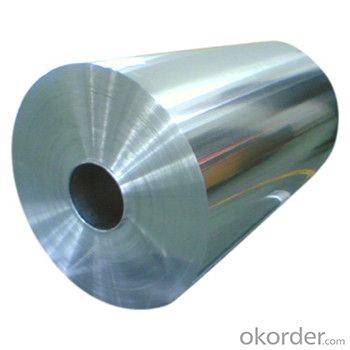
5.FAQ
1) How about your company?
A world class manufacturer & supplier of aluminum coil and alloy blanks. Aluminum production base is comprised of 18 aluminum annealers, 10 coil and foil mills, 4 continuous production lines, 2 hot rolling production line and 3 prepainted lines.
Export 5000 tons per month to Asia, America and Middle East. Always do the best for our clients.
2) Can you guarantee the quality of the products?
We are responsible for the quality of materials to get a long-term cooperation with clients in a reasonable period of time and we are glad to arrange and coordinate any third party inspection for you.
3) What is the delivery time after purchase?
35 day after receiving client’s deposit or correct LC
- Q: Can aluminum sheet be used for food contact applications?
- Yes, aluminum sheet can be used for food contact applications. Aluminum is a widely used material in the food industry due to its excellent properties. It is non-toxic, corrosion-resistant, and has a high thermal conductivity, making it suitable for various food processing and packaging applications. Aluminum sheets can be used to make food containers, trays, and foils, providing a safe and hygienic option for food storage and transportation. Additionally, aluminum is recyclable, making it an environmentally friendly choice for food contact applications.
- Q: Okay, so i swallowed some aluminum foil like the size of a quarter from my fruit rollup wrapper, ha don't ask why? but my stomach KINDA hurts right now...like 2 minutes later.. Could this have done any damage to me.?
- You'll be fine! It should ball up and you'll eventually pass it! (BLAH) My dog actually ate an entire aluminum foil cupcake tin once! He passed it in a day or 2 (Not that I'm comparing you to a dog! But same kinda thing!) Your stomach kinda hurts probably cause you're freaking out! Our minds like to play tricks on us that way. But if you end up getting lower abdo pain in the next 12-24 hours (sharp, stabbing) then better get it checked out! Good Luck! Watch out for those wrappers next time! ha
- Q: Can the aluminum sheets be used for manufacturing chemical storage tanks?
- Indeed, chemical storage tanks can be manufactured using aluminum sheets. Aluminum proves to be a flexible substance with numerous benefits for this particular application. Notably, its lightweight nature, resistance to corrosion, and impressive strength-to-weight ratio make it an ideal choice for securely storing a wide range of chemicals. Moreover, aluminum can be effortlessly molded into various configurations and dimensions, enabling the customization of storage tanks to suit specific needs. Nevertheless, it is crucial to take into account the type and concentration of the chemicals to be stored, as certain substances may potentially react with aluminum. In such instances, it becomes vital to employ appropriate coatings or linings to avert any chemical reactions.
- Q: I need to know what composite bats do and how (or if) they are better than aluminum bats.
- one is made of aluminum and one isn't. haha i saw a movie and it had a guy and he said yo man i don't have your money
- Q: What are the different methods of punching aluminum sheets?
- There are several methods of punching aluminum sheets, including manual punching using handheld tools, mechanical punching using presses, and CNC punching using computer-controlled machines.
- Q: Can aluminum sheets be easily bent or shaped?
- Yes, aluminum sheets can be easily bent or shaped due to their malleability, making them ideal for various applications in industries such as construction, automotive, and aerospace.
- Q: This question asks for a list of adhesive types that are suitable for bonding aluminum sheets. It is important to provide a variety of options to give a comprehensive answer.
- <p>There are several types of adhesives used for bonding aluminum sheets together, including epoxy resins, which offer strong adhesion and resistance to heat and chemicals; polyurethane adhesives, known for their flexibility and durability; acrylic adhesives, which provide good adhesion and are easy to use; cyanoacrylates or 'super glues,' which bond quickly and are great for small, precise applications; and silicone adhesives, which are excellent for high-temperature applications and offer flexibility. Each type has its own advantages and is chosen based on the specific requirements of the bonding task, such as strength, flexibility, and resistance to environmental factors.</p>
- Q: I'm gonna drop the dime and get a bass boat. other than weight why is a fiberglass better than aluminum?I'm looking at the difference between the top of the line BassTracker and the bottom of the line Nitro. I only want about a 90 -115 hp and I'm gonna buy a couple years old to save some money.. so what are the pros - cons?
- Bass Tracker Aluminum Boats
- Q: Characteristics of anodized aluminium plate
- (1) good processing: anodized aluminum decorative strong, moderate hardness, easy bending forming, continuous high-speed, convenient and direct processing into products, no need for complicated surface treatment, greatly shorten the production cycle and reduce production cost.(2) good weather resistance: standard thickness of oxide film (3 m) anodized aluminum plate, indoor use for a long time, no discoloration, no corrosion, no oxidation, no rust. Anodized aluminum oxide film (10 m) can be used outdoors, and can be exposed to sunlight for a long time without discoloration.
- Q: What's the difference between 6061 aluminum plate, 7075 aluminium plate and 6063 aluminum plate?
- Simply put, 6061 and 6063 belong to the 6 series, 6061 hardness in 90HB 6063 in 80HB, suitable for brazing, surface oxidation treatment is better, 7075 T6 hardness in 150HB, hardness is highestUsually 6061 and 6063 can be common
Send your message to us
Aluminum Roofing Sheets Ontario - Flat Plain Aluminium Foil for Flexible Packaging
- Loading Port:
- China main port
- Payment Terms:
- TT OR LC
- Min Order Qty:
- 3 m.t.
- Supply Capability:
- 10000 m.t./month
OKorder Service Pledge
OKorder Financial Service
Similar products
Hot products
Hot Searches
Related keywords
